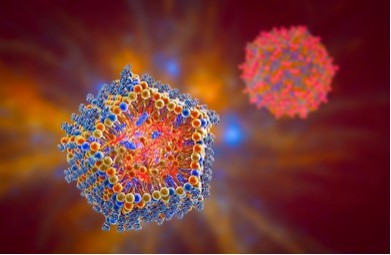Analysis of Systems with Inorganic Excipients
Pharmaceutical raw materials include active pharmaceutical ingredients (API) and inactive ingredients or excipients. Drug substance is a substance with pharmaceutical activity and required pharmacological action, while excipient is a pharmacologically inert substance, usually used as a carrier of drug substance in drugs. Inorganic materials, such as nanoparticles prepared from oxides of silver, gold, silicon dioxide, titanium, iron, copper, and zinc, have potential applications in a variety of biomedical applications. Especially those materials with significant porosity are becoming good candidates for delivering a series of drugs (antibiotics, anticancer drugs, and anti-inflammatory drugs), and have many advantages in formulation and engineering design (packaging drugs in amorphous form, controlling delivery and improving the target).

As an expert in the field of nuclear magnetic resonance, Creative Biostructure uses solid 13C, 1H single nuclear magnetic resonance, and CP/MAS NMR spectra to provide customers with the analysis of drug delivery systems containing inorganic excipients, aiming to help customers clarify the intermolecular interaction in the system and the relationship between the excipient structure and the physical and chemical properties of drugs.
Our Principles
To determine the structure of the prepared material and the effect of synthesis on drug molecules, we use NMR to determine the modification on API and compare the pure material with the material obtained after synthesis.
Spin and magic angle spin in cross-polarized solid-state NMR experiments are widely used in the research of amorphous solids. Polarization-magnetization transfer is used to detect the existence of rare nuclei by studying the influence of rare nuclei on rich spin system signals and to establish connectivity nuclear sites between different nuclei. In addition, by eliminating chemical shift anisotropy and dipole coupling broadening. In this case, the single and CP NMR - MAS experiments of 13C and 1H help to further distribute protonated and non-protonated carbon atoms.
Content of NMR analysis
13C and 1H NMR MAS analysis of pure drugs.
13C and 1H NMR MAS analysis of API-excipient system.
Deliverables
13C and 1H NMR MAS spectra of pure drugs.
13C and 1H NMR MAS spectra of API-excipient system.
Spectral comparison report of pure drug and API-excipient system.
Comparative analysis report of 13C and 1H NMR MAS spectra of API-excipient system produced by different preparation methods.
Applications
Interaction between excipients with nanostructures with different channel sizes and API.
Analyze the modification effect of inorganic excipients of nanostructures on API.
Analyze the influence of different synthetic processes on the structure of drug molecular configuration.
Help customers analyze the influence of matrix pore size, pore size set shape, and drug loading method on drug release kinetics.
Help customers analyze the impact of different preparation methods of host and guest agents on API structure.
Help customers understand the impact of structure on main drug allocation.
Help customers understand the evolution matrix of drugs in nanostructured reservoirs.
Inorganic Excipients that can be Analyzed
Porous polymeric carriers
Poly (lactic-co-glycolic acid) (PLGA), poly lactic acid (PLA), poly (methyl methacrylate), poly-(methyl ethyl cyanoacrylate), polyacrylamide, Eudragit, chitosan, polysucrose and alginate.
Mesoporous inorganic porous carriers
Mesoporous silica-based materials, carbon, zirconia, alumina, titanium oxide and composites.
Creative Biostructure is committed to providing high-quality NMR analysis services to advance the life sciences fields. If you have any questions or needs, please contact us and our customer service staff will help you the first time.
Ordering Process
